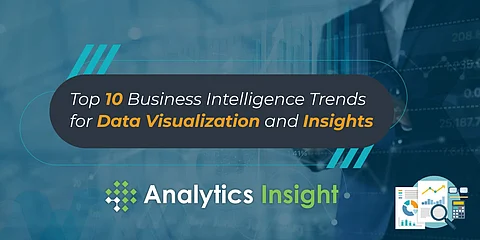

Currently, businesses have access to more data than they can count! The question remains what to do with such colossal levels of data and how to derive intelligent insights from it?
Data visualization is perhaps is the answer, that integrates data visually to imbibe intelligent data stories which need business synthesis to bring it all together. The coming years are ripe that would define the true value of data letting organisations adjust their operations. In anticipation of futuristic gains from a host of data sources, business users would face the complex data queries, to unearth what their data wants to communicate. These 10 business intelligence trends for data visualization will help make it possible:
According to Cisco's Global 2021 forecast, globally, there will be 71 million households (7.5% of all Internet households) generating more than 500 Gigabytes of big data per month in 2021. Globally, the average mobile connection will alone generate 5,373 Megabytes of mobile data traffic per month in 2021, up from 972 Megabytes in 2016. And that is just data generated from internet and mobile-connected devices!
DataOps term coined by Gartner improves the quality and reduces the cycle time of data management on the operational side. The rise of citizen data scientists would make it possible for self-service analytics to put faith in IT reliance. Together, DataOps and Self-service BI would help in a fluid flow of data across warehouses and pipelines across the entire value chain.
Data storage will be a hybrid mix bringing on-premises and cloud storage on a common platform. This would let enterprises approach more agnostically to a cloud vendor. As an aftermath of Covid-19, more businesses will shift to the cloud that means emergence of hybrid product features- some of which will work in the cloud, some that work on-premises, and some that work on both.
Data storytelling is a critical element of Business Intelligence. The dynamics of data analytics would redefine the art of data storytelling. As organizations create a thriving analytics culture, data storytelling methods would be nurturing a conversation around the data and less about a definite possible conclusion. Did anyone say that the journey is more important than the destination?
Developers would create more personalised experiences related to a company's data flow, thereby enriching the system with analytic apps reducing the time needed for data-based actions over the BI loop. Workflows would be more fluid and feel like one unified system letting data owner manage one asset through the BI and analytics platform instead of multiple siloed platforms.
Data lakes have become a preferred data storage medium for most of the enterprises. Data lakes are a popular concept due to the massive amounts of data they can store at a very low cost offering different storage from the cloud. However, this data is stored in an unstructured way without a predefined schema that leads businesses to utilise only 10% of the data stored. As an emerging trend in the coming year, businesses will see more and more unused data operationalised from the data lakes for greater BI endeavours.
Advancements in NLP systems would enable data owners to engage with natural data conversations. Increased number of business intelligence (BI) vendors offer direct interactions with data. This lets businesses to understand and gather more economic value from piles of information warehouses by creating a more natural conversational experience.
Data is moving at jet fast speed to the cloud, driving organizations to rethink their data workflows. The coming years would witness agile data strategies that modernise an enterprise functioning. This means rethinking how to gather maximum leverage from data. One possible way is moving data to the cloud, that adds to flexibility and scalability at a lower total cost of ownership. Cloud makes it easier for companies to move away from the traditional environment where data resides in a highly-structured, on-premises warehouse to a more scalable, flexible infrastructure- a full-cloud or hybrid solution.
Gone are the days when data resided in legacy platforms. This is the age of dynamic data pipelines. Data owners want and need their data for live model building. Data pipelines and data catalogues a term massively used by Qlik encompasses business-ready data available for analysis, rather than performing analysis in one silo and taking action in another.
This trend of actionable analytics would expedite the decision-making process for both technical and non-technical roles.
The dominance of Citizen Data Scientists will pave way for Citizen Data Communicators, or non-technical professionals who can communicate with data as effectively as their technical counterparts would do. 2021 and beyond will witness data visualization become a universal language across businesses, opening up massive opportunities for citizen data communicators to convey intelligence to decision-makers in a way that is actionable and easy to understand.
Join our WhatsApp Channel to get the latest news, exclusives and videos on WhatsApp
_____________
Disclaimer: Analytics Insight does not provide financial advice or guidance on cryptocurrencies and stocks. Also note that the cryptocurrencies mentioned/listed on the website could potentially be scams, i.e. designed to induce you to invest financial resources that may be lost forever and not be recoverable once investments are made. This article is provided for informational purposes and does not constitute investment advice. You are responsible for conducting your own research (DYOR) before making any investments. Read more about the financial risks involved here.
